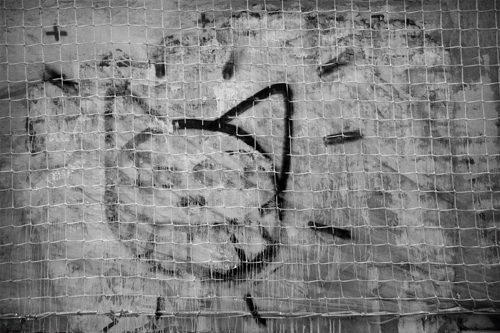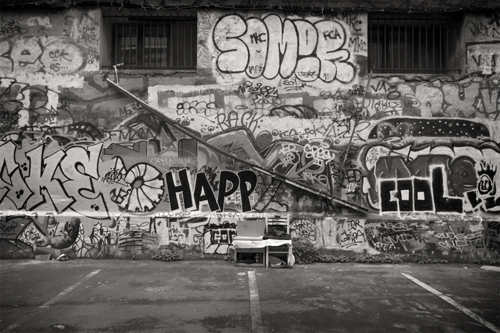
“The techno-linguistic machine is giving language to human beings, and also taking the place of human beings in language for the current generation,” writes Franco Berardi, in his strange, compact yet sprawling 2012 study The Uprising: On Poetry and Finance. “The first generation that learned more words from a machine than from their mothers,” he goes on,
has a problem concerning the relationship between words and the body, between words and affection. The separation of language learning from the body of the mother and from the body in general is changing language itself, and is changing the relation between language and the body.
Increasingly, language is a neutral instrument, if not a blunt, a blatant object. A species of information, language is fast becoming a means to cutthroat commercial ends or social ostracism, rather than a collective, participatory passage to communication, community. Social relations are mediated more and more by language as a transaction, one that passes quickly and often anonymously through the platforms of 24-hour online shopping, mutually solipsistic self-presentation networks, telephones that complete and auto-correct your messages for you, even when your misspelling was creative, archaic, intentional, foreign. “When the relation between the signifier and the signified is no longer guaranteed by the presence of the body,” Berardi laments,
my affective relation to the world starts to be disturbed. My relation to the world becomes functional, operational—faster, if you will, but precarious. This is the point where precariousness starts. At the point of disconnection between language and the body.

No better literary example can be offered of how precariousness governs the lives—and language—of children than The Cat in the Hat. “Then Sally and I / Did not know what to say,” the boy narrator reports, “Our mother was out of the house / For the day.” In the absence of their mother, with their nascent language no longer guaranteed by the proximity of her body, the children often look absolutely dumbfounded, their eyebrows raised and eyes wide in disbelief or worry, and their miniature mouths forced to utter oh, or more like it, uh-oh. While the cat has got their tongues, it’s only the fish who palavers—pathetically—with the feline invader, whose own verbal dexterity seems conditioned if not galvanized by the mother’s having gone missing. When he finally manages to break his silence, after Thing One and Thing Two have been flying their mother’s dress around the house on a kite string, like a ghost, the narrator does so to solicit the linguistic confidence his mom alone might provide: “I do NOT like the way that they play!” he exclaims. “If Mother could see this, / Oh, what would she say?” Unlike the anecdote Freud tells, in Beyond the Pleasure Principle, of the toddler who masters the fear of his mother’s disappearance by angrily throwing objects around the room before retrieving them, as if casting a signifier in order to snag its signified, in Dr. Seuss’s tale it’s the cat who can safely perform precariousness—or almost. The first thing he grabs, standing tiptoe on a ball, is a book: he’s the one to keep language up in the air. Soon he’s impossibly balancing a cup of milk and a cake with candles, as well, a toy ship and a rake and a red fan, even the frustrated fish in his bowl—and he brags about the whole vertiginous production in rhymed anapestic dimeter. But the juggling act can’t last, of course, even if his versifying continues untrammeled, and in a rehearsal of the biblical or Miltonic lapse, all the items topple. As Louis Menand points out, writing in The New Yorker, to have constructed a kids’ book around the trope of the mater abscondita was a strange choice for a man who took his mother’s maiden name as his nom de plume, undoubtedly because she’d read to him devotedly at night and encouraged his budding interest in rhythm and rhyme. When she finally shows up, the mother in the story is only a leg seen out the window, a red dress and a raised hand, her thigh and high heel coming through the door: a living synecdoche.

While frequently argued that the cat, as a principle of excess, has liberated the kids from their doldrums by providing entertainment that’s precisely not “functional” in Berardi’s sense, the brother and sister nonetheless “take no joy in his stupid pet tricks,” as Menand argues. In fact, “they resent his attempt to distract them from what they really want to be doing, which is staring out the window for a sign of their mother’s return.” This vigilance at the glass, watching for the mother, is a figure for desiring the restoration of a language at once transparent—that is, accessible—and embodied. And right on cue, the moment the mother is spotted approaching, there’s a panic inside the house to clean up the chaos; the narrator’s success at trapping Thing One and Thing Two suggests that this maternal advent is catalyzing a restitution of verbal proficiency. “So, as fast as I could, / I went after my net,” the boy explains, emphasizing his newfound ability to speak:
And I said, “With my net
I can get them I bet.
I bet, with my net,
I can get those Things yet!”
Having forecefully repositioned the signified within the signifier, the boy orders the cat to pack up the pair of Things and take them away. When the mother eventually walks in, the children are once again speechless, but this time not knowing what to say is a moral quandary, an overload of options—“what SHOULD we do?”—rather than a mental or lingual block: to tell the truth and risk being punished, or else lie and try to get away with it. Either option implies adroitness in talking. The story turns toward the reader, instead, and asks what we’d confess, if our mothers inquired of us.

Published in 1957, The Cat in the Hat was commissioned as an experiment in helping children learn to read. Responding to a disparaging article printed in Life by John Hersey, who attacked traditional primers as dull and inefficacious, Houghton Mifflin publisher William Spaulding contracted Theodore Geisel to write a book that tots would be too thrilled to put down—and using only 300 words. Spaulding sent Geisel a trio of lists, each containing 220 words that language acquisition experts, shifting the developmental emphasis from word recognition to sonics and phonics, had determined would be sufficient to put a child on the path to reading. Adding a few of his own to those he selected, Geisel wrote a book 1,702 words long, but it contained just 220 different words—a “techno-linguistic machine” in its way, but one children would learn in the arms of their parents, laughing at how the world burbled aloud. If the narrative arc, as writ on the page, shows children learning to use language “correctly,” putting each thing in its rightly identified box, the tale as shared between kids and their folks is a differently accented game, since everything the cat says, in a whirlwind of virtuosic play, also comes out of the ludic mouths of families doing storytime together. With Geisel’s glottal poem, reading by rote was consigned ahead of its time to a Fordist past—“It was a tour de force,” Menand observes, “and it killed Dick and Jane”—even if the heteronormative home was not. Although, despite Menand’s assumption that she’s on a murderous or amorous mission, nothing says mother hadn’t been at the office all day, out of professional satisfaction or financial necessity. Over half a century later, it may be that the book’s hypothesis—that verbum is an intimate extension of caro—is, in its turn, dead once again, the question of what we’d say to our own parents obsolete. Not so happy or happily ever after: “The mother has left,” according to Menand’s dark prognosis of our digital, virtual, numerical age, “and she’s never coming back.”

—Photos by Andrew Zawacki
Andrew Zawacki is the author of five books of poetry: Unsun : f/11 (2019), Videotape (2013), Petals ...
Read Full Biography

